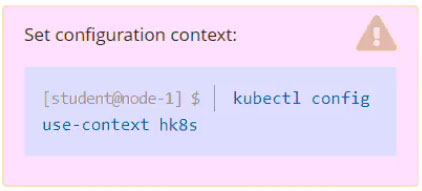

SIMULATION -
Task -
Create a new NetworkPolicy named allow-port-from-namespace in the existing namespace fubar.
Ensure that the new NetworkPolicy allows Pods in namespace internal to connect to port 9000 of Pods in namespace fubar.
Further ensure that the new NetworkPolicy:
✑ does not allow access to Pods, which don't listen on port 9000
✑ does not allow access from Pods, which are not in namespace internal


TemitopeWalker
Highly Voted 2 years, 8 months agopentium2000
Highly Voted 2 years, 7 months agoJibbajabba
1 year, 7 months agonoahsark
Most Recent 8 months, 2 weeks agoPi_otR
1 year, 5 months agofonte
11 months, 3 weeks agoAlencar_07
1 year, 7 months agoStunomatic
1 year, 8 months agoaloshari
1 year, 8 months agoShenannigan
1 year, 10 months agoVivekSolutionArchitect
1 year, 8 months agodidorins
2 years agoNurbol
2 years agosonixrw
2 years agoahmedovelshan
2 years, 1 month agokopper2019
2 years, 2 months agodayody
1 year, 11 months agokopper2019
2 years, 2 months agoSylzys
2 years, 2 months agoramon712
2 years, 4 months agoramon712
2 years, 4 months agorajusai
2 years, 5 months agoSteve122
2 years, 5 months ago